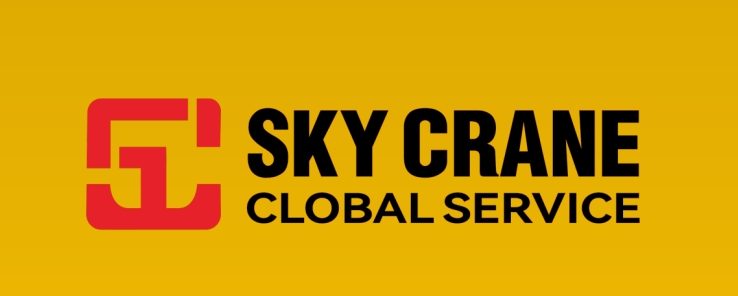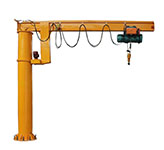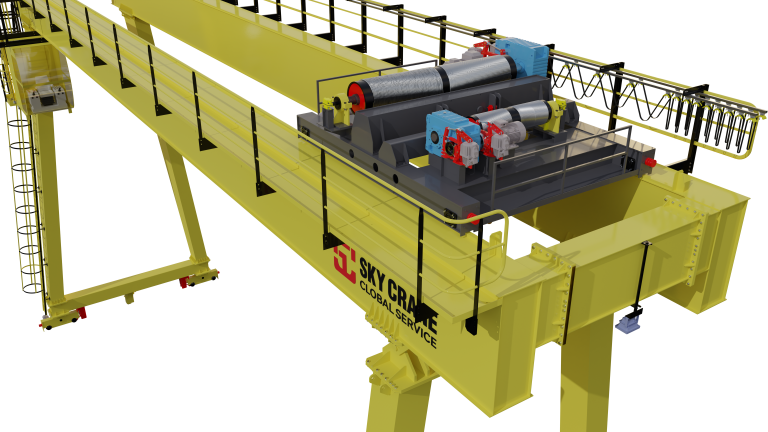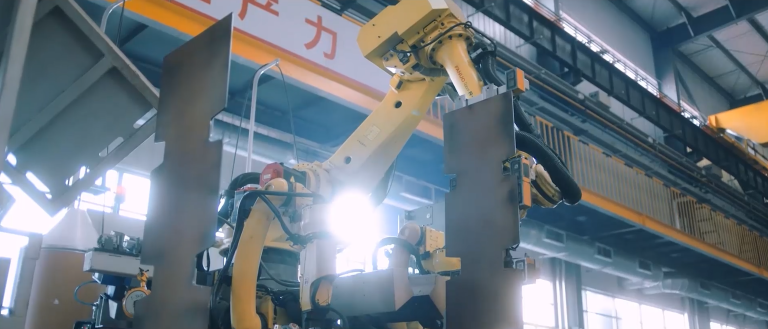Table of Contents
कस्टम मेकर कार्यशालाहरूमा म्यानुअल एकल बीम क्रेनहरू प्रयोग गर्ने फाइदाहरू
नम्बर
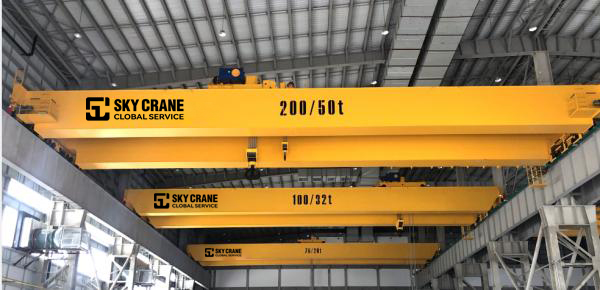
उत्पादनको नाम
| LD इलेक्ट्रिक एकल बीम क्रेन | रबर – थकित ग्यान्ट्री क्रेन |
| 1 | युरोपेली शैली क्रेन |
| 2 | हार्बर क्रेन |
| 3 | तपाईँको कस्टम मेकर व्यवसायको लागि सही म्यानुअल एकल बीम क्रेन कसरी छनौट गर्ने |
| 4 | कस्टम मेकर वातावरणमा म्यानुअल एकल बीम क्रेनहरू सञ्चालन गर्नका लागि शीर्ष सुरक्षा सुझावहरू |
म्यानुअल एकल बीम क्रेनहरू कस्टम निर्माता वातावरणमा आवश्यक उपकरणहरू हुन्, भारी सामग्री र उपकरणहरू सार्न आवश्यक लिफ्टिंग शक्ति प्रदान गर्दछ। यद्यपि, यी क्रेनहरू सञ्चालन गर्दा दुर्घटनाहरू र चोटपटकहरू रोक्न सुरक्षा प्रोटोकलहरूमा सावधानीपूर्वक ध्यान दिन आवश्यक छ। यस लेखमा, हामी अनुकूलन निर्माता वातावरणमा म्यानुअल एकल बीम क्रेनहरू सञ्चालन गर्नका लागि शीर्ष सुरक्षा सुझावहरू छलफल गर्नेछौं। यसमा फ्याँकेका केबलहरू वा ढिलो बोल्टहरू जस्ता झरेको कुनै पनि लक्षणहरूको लागि जाँच गर्ने र कुनै पनि समस्यालाई तुरुन्तै सम्बोधन गर्ने समावेश छ। नियमित मर्मत र निरीक्षणले उपकरणको विफलता रोक्न र क्रेन सुरक्षित रूपमा सञ्चालन हुन्छ भन्ने सुनिश्चित गर्न मद्दत गर्नेछ। यसमा तौल सीमाहरू पालना गर्ने, क्रेन ओभरलोड गर्नबाट जोगिन र उपयुक्त लिफ्टिङ प्रविधिहरू प्रयोग गर्ने समावेश छ। यी दिशानिर्देशहरू पालन गर्न असफल हुँदा दुर्घटनाहरू र चोटपटकहरू हुन सक्छ, त्यसैले क्रेनलाई सधैं यसको निर्दिष्ट प्यारामिटरहरू भित्र सञ्चालन गर्न आवश्यक छ।
अर्को महत्त्वपूर्ण सुरक्षा सुझाव भनेको म्यानुअल एकल बीम क्रेन सञ्चालन गर्दा सधैं उचित लिफ्टिङ उपकरण र सामानहरू प्रयोग गर्नु हो। यसमा कामको लागि सही स्लिङहरू, हुकहरू र एट्याचमेन्टहरू प्रयोग गर्ने, साथै सबै उपकरणहरू राम्रो काम गर्ने अवस्थामा छ भनी सुनिश्चित गर्ने समावेश गर्दछ। गलत उपकरण वा सामानहरू प्रयोग गर्दा लिफ्टको सुरक्षामा सम्झौता हुन सक्छ र दुर्घटनाको जोखिम बढाउन सक्छ। यसमा क्रेनमा लोडलाई राम्ररी जोड्ने, उपयुक्त लिफ्टिङ्ग पोइन्टहरू प्रयोग गर्ने, र लोड सन्तुलित र स्थिर छ कि छैन भनेर डबल-जाँच गर्ने समावेश छ। लोडलाई राम्ररी सुरक्षित गर्न नसक्दा लिफ्टको समयमा लोड शिफ्टिङ वा खस्न सक्छ, यसले गम्भीर सुरक्षा खतरा निम्त्याउन सक्छ। यसमा क्रेन अपरेटरसँग सञ्चार गर्न हात संकेत वा रेडियोहरू प्रयोग गर्ने र सबै कामदारहरूलाई क्रेनको चाल र लोडको स्थान बारे सचेत छन् भनी सुनिश्चित गर्ने समावेश छ। दुर्घटनाहरू रोक्न र लिफ्ट सुरक्षित रूपमा चलाइएको सुनिश्चित गर्नको लागि स्पष्ट सञ्चार आवश्यक छ। यसमा ओभरहेड बाधाहरू, क्षेत्रका अन्य कामदारहरू, र लिफ्टमा जोखिम हुन सक्ने सम्भावित खतराहरू बारे सचेत हुनु समावेश छ। सजग रहन र आफ्नो वरपरको बारेमा सचेत रहँदा, तपाईंले दुर्घटनाहरू रोक्न र लिफ्ट सुरक्षित रूपमा सञ्चालन भएको सुनिश्चित गर्न मद्दत गर्न सक्नुहुन्छ। चोटहरू। यी शीर्ष सुरक्षा सुझावहरू पछ्याएर, उचित मर्मत सहित, सही उपकरणहरू प्रयोग गरेर, लोड सुरक्षित गर्ने, स्पष्ट सञ्चार कायम राख्ने, र आफ्नो वरपरका बारे सचेत रहँदै, तपाईंले क्रेन सुरक्षित र प्रभावकारी रूपमा सञ्चालन भएको सुनिश्चित गर्न सक्नुहुन्छ। याद गर्नुहोस्, अनुकूलन निर्माता वातावरणमा म्यानुअल एकल बीम क्रेन सञ्चालन गर्दा सुरक्षा सधैं शीर्ष प्राथमिकता हुनुपर्छ।
How to Choose the Right Manual Single Beam Crane for Your Custom Maker Business
When it comes to running a custom maker business, having the right equipment is essential for ensuring efficiency and productivity. One piece of equipment that can greatly benefit your operations is a manual single beam crane. These cranes are versatile and can be customized to meet the specific needs of your business. However, with so many options available on the market, choosing the right manual single beam crane can be a daunting task. In this article, we will discuss some key factors to consider when selecting a manual single beam crane for your custom maker business.
First and foremost, it is important to assess the weight capacity of the crane. The weight capacity of a crane is the maximum weight that it can safely lift and transport. When choosing a manual single beam crane for your custom maker business, you will need to consider the weight of the materials and products that you will be handling. It is crucial to select a crane with a weight capacity that exceeds the heaviest load you anticipate lifting. This will ensure that the crane can handle all of your lifting needs without compromising safety.
In addition to weight capacity, you should also consider the span of the crane. The span of a crane refers to the distance between the two supporting columns. The span of the crane will determine the amount of space available for lifting and moving materials. It is important to choose a crane with a span that is suitable for the layout of your workspace. A crane with a span that is too short may limit your ability to maneuver materials, while a crane with a span that is too long may take up unnecessary space in your facility.
Another important factor to consider when choosing a manual single beam crane is the lifting height. The lifting height of a crane is the maximum height at which it can lift materials. It is important to select a crane with a lifting height that is sufficient for your needs. Consider the height of your workspace and the height of the materials you will be handling when determining the appropriate lifting height for your crane.
Furthermore, you should also consider the speed and control options of the crane. Some manual single beam cranes come equipped with variable speed controls, allowing you to adjust the speed of the crane to suit your needs. Additionally, some cranes offer remote control options, which can improve efficiency and safety in your operations. Consider your specific requirements and preferences when selecting a crane with the appropriate speed and control options.
Lastly, it is important to consider the reputation and reliability of the manufacturer when choosing a manual single beam crane for your custom maker business. Look for a manufacturer with a proven track record of producing high-quality, durable cranes. Reading customer reviews and testimonials can help you gauge the reliability and performance of a particular manufacturer.
In conclusion, selecting the right manual single beam crane for your custom maker business requires careful consideration of factors such as weight capacity, span, lifting height, speed and control options, and manufacturer reputation. By taking the time to assess your specific needs and preferences, you can choose a crane that will enhance the efficiency and productivity of your operations.
Top Safety Tips for Operating Manual Single Beam Cranes in Custom Maker Environments
Manual single beam cranes are essential tools in custom maker environments, providing the necessary lifting power to move heavy materials and equipment. However, operating these cranes requires careful attention to safety protocols to prevent accidents and injuries. In this article, we will discuss the top safety tips for operating manual single beam cranes in custom maker environments.
First and foremost, it is crucial to ensure that the crane is properly maintained and inspected before each use. This includes checking for any signs of wear and tear, such as frayed cables or loose bolts, and addressing any issues immediately. Regular maintenance and inspections will help prevent equipment failure and ensure the crane operates safely.
When operating a manual single beam crane, it is important to always follow the manufacturer’s guidelines and recommendations. This includes adhering to weight limits, avoiding overloading the crane, and using the appropriate lifting techniques. Failure to follow these guidelines can result in accidents and injuries, so it is essential to always operate the crane within its specified parameters.
Another important safety tip is to always use proper lifting equipment and accessories when operating a manual single beam crane. This includes using the correct slings, hooks, and attachments for the job, as well as ensuring that all equipment is in good working condition. Using the wrong equipment or accessories can compromise the safety of the lift and increase the risk of accidents.
In addition to using the proper equipment, it is also important to ensure that the load is properly secured before lifting. This includes properly attaching the load to the crane, using the appropriate lifting points, and double-checking that the load is balanced and stable. Failing to secure the load properly can result in the load shifting or falling during the lift, posing a serious safety hazard.
When operating a manual single beam crane, it is important to always maintain clear communication with other workers in the area. This includes using hand signals or radios to communicate with the crane operator and ensuring that all workers are aware of the crane’s movements and the location of the load. Clear communication is essential for preventing accidents and ensuring that the lift is carried out safely.
Finally, it is important to always be aware of your surroundings when operating a manual single beam crane. This includes being mindful of overhead obstacles, other workers in the area, and any potential hazards that could pose a risk to the lift. By staying vigilant and aware of your surroundings, you can help prevent accidents and ensure that the lift is carried out safely.
In conclusion, operating a manual single beam crane in a custom maker environment requires careful attention to safety protocols to prevent accidents and injuries. By following these top safety tips, including proper maintenance, using the correct equipment, securing the load, maintaining clear communication, and being aware of your surroundings, you can ensure that the crane is operated safely and effectively. Remember, safety should always be the top priority when operating a manual single beam crane in a custom maker environment.
